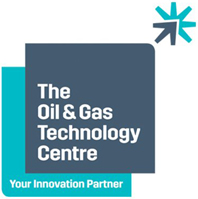
- World’s first Offshore Work Class Robot (OWCR) in development by tech developer, Taurob
- Leading innovators, Total E&P and Equinor commit to robots within future site operations
- First of its kind ATEX battery by Saft key to extending performance
Following the unveiling of the OGRIP (Offshore Ground Robotics Industrial Pilot) robot at SPE Offshore Europe 2019 last month, the Oil & Gas Technology Centre (OGTC), technology developer Taurob, and industry partner Total E&P, have unveiled major key developments, including the addition of Equinor and Saft in the joint industry project team.
This next stage of the programme will develop the world’s first Offshore Work Class Robot (OWCR), which will advance the original OGRIP prototype originally developed with Total E&P and the OGTC.
OGRIP is primarily used as a surveillance vehicle, however the OWCR has an improved chassis, enhancing the overall performance of ground robotics through the addition of active manipulation, to complement its current capabilities of surveying, inspection and observation.
Andy Bell, Asset Integrity Solution Centre Project Manager, commented:
“Total E&P and Equinor’s commitment to robots within site operations validates the development and competency around use case specification. These collaborations with Taurob and Saft, allows the industry to pioneer developments in robotics and position the UKCS at the heart of innovation.”
Jean-Michel Munoz, R&D Next Generation Facilities Project Manager – Deep Offshore Program from Total E&P:
“Exploration and production operations are conducted in increasingly harsh and challenging conditions, including extreme cold, arid climates and isolated locations. This project is key to Total’s forward-thinking approach, making operations safer by reducing the exposure of personnel to potentially high-risk situations and the immense challenges our teams face – paving the way for tomorrow’s simpler, streamlined and less expensive facilities that will require less annual maintenance. Routine inspection tasks will be automated and performed by the robot, leaving the operator free to concentrate on complex tasks that robots are yet able to perform.”
Joining the project team, Stine Vatneberg, Leader of Automation Technology for R&D within Equinor added:
“Equinor recently awarded the first contract on use of wireless, autonomous underwater drones in the oil and gas industry. We look forward to test and deploy the world’s first autonomous grounded robot in collaboration with key partners.
“Maximising the robot’s operational time in an ATEX environment requires a high capacity battery with the ability to fast charge. The project scope will break new ground by introducing a fully ATEX-certified lithium-ion battery, increasing operational usefulness, extend performance and will unlock many new applications.”
Matthias Biegl, Managing Director for Taurob, added:
“For us, OGRIP was really the start towards fielding reliable ground robots in the oil and gas industry. These robots will perform countless missions and duration tests on different sites, and we will increase their capabilities to work on unmanned installations within the recently started joint industry project.
“Together with Total E&P, Equinor, Saft and the OGTC, we will completely redesign robots to fulfill the needs of solo missions and a high level of complexity regarding manipulation and safety. In parallel, we have started to set up an integrated robotics production and support service to facilitate worldwide rollout of robots together with our partner, Dietsmann.”
Key stakeholder in the project, Paul Gallot-Lavallée, General Manager of Saft France, Space & Defense Division commented:
“With the requirement to grant the robot autonomy and time to operate in the most severe conditions, Saft is developing the first ATEX/IECEx lithium-ion battery in the energy range 500 to 1000 Wh. We use individual Saft MP176065 ise cells (made in Poitiers, France) that can operate in severe environmental conditions, including a wide temperature range from -30°C to +60°C.
“Our cells are arranged in a modular architecture that allows the robot manufacturer to adapt the sizing to the stringent needs of oil and gas platforms. Moreover, the largely improved charging rate and cycling lifetime compared to traditional batteries will allow for a continuous and smooth operation of the robot; the battery will be maintenance free for a full year.”
The large-scale application of robotics for inspection and maintenance is being discussed this week (22 – 23 October 2019) at the ‘SPRINT World Conference for Inspection and Maintenance Robotics’, in Rotterdam. The team from Taurob will be exhibiting at stand number 21, and along with Total E&P will be hosting a session about “Robots for Routine Inspection & Maintenance: A First-Hand Account from Total’s Industrial Pilot” on 23 October 2019.
Energy Industry Directory: OGTC
 KEYFACT Energy
KEYFACT Energy